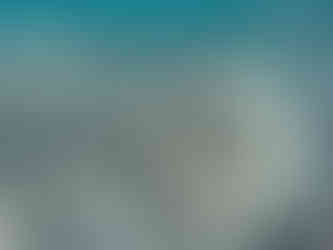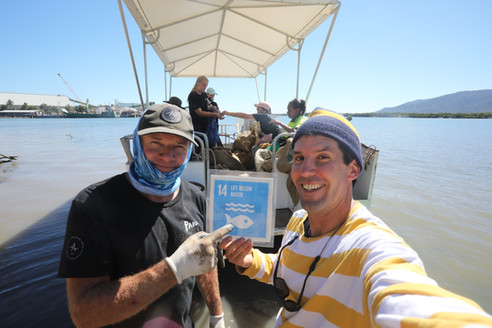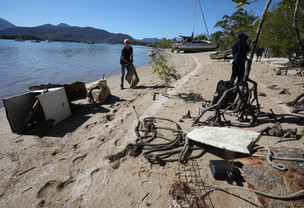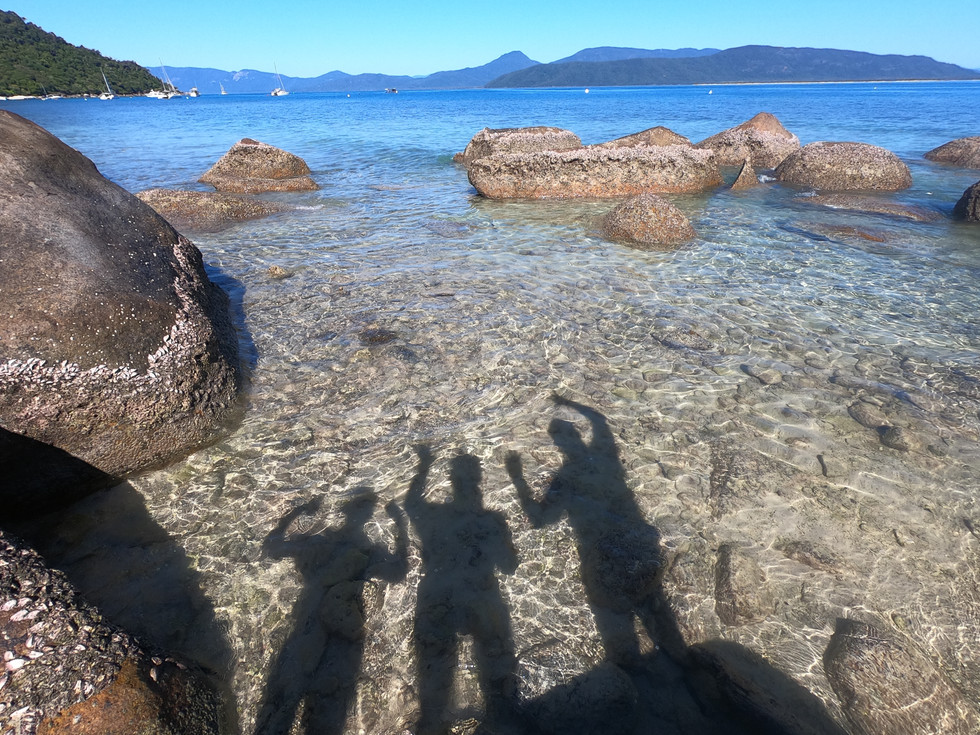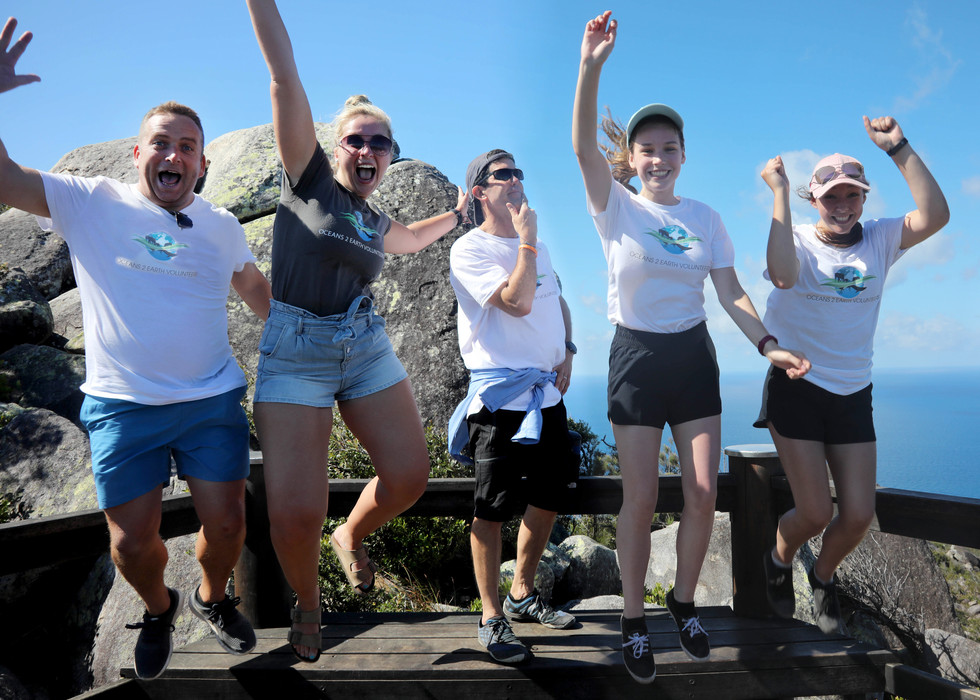
I've had a connection to Australia since I was eight years old. Inspired by a story an elementary school teacher, Madame Dickie, told our class at Community School, I put a message in a bottle and threw it into the ocean near Captiva Island, Florida, hoping it would travel around the world and I'd get a response. Guess what? Ninety-days later a woman was walking down a beach near Sydney, Australia and found my message in the bottle. The woman's husband happened to work at the US Embassy in Canberra and she was from Atlanta, Georgia. The story made the local newspaper, but could never be confirmed in the Guinness Book of World Records. Still pretty cool, right? Always made me want to go to Australia.
* anyone note the irony of it considering I was littering the ocean from an early age? Thankfully the bottle was recycled!

As I started to plan my sabbatical last spring, I totally scored when a $425 roundtrip fare from St. Louis to Sydney on an American Airlines 787 Dreamliner with stops in Chicago and LA showed up on a search engine I was following (nextvacay.com, btw). Unimaginable! I picked early September for the 12 day adventure (end of winter down under), before the MUN conference season started. I immediately started planning my trip to Australia.......
OMG, Australia is a HUGE continent! Good thing I discovered this early in my research as I looked for rental campers, thinking I would drive up the east coast, roundtrip from Sydney to Cairns, and photograph along the beaches. When I looked into a one way return trip by air and saw it was a 3.5 hour non-stop flight I knew I had to look at distances. That's when I discovered it's a 1500 mile drive, one way! Then I realized Australia has fresh and salt water crocodiles, so shooting on the beaches and mingling around the mangroves was not a thing. Was there enough time to get to Ayers Rock/Uluru? Tasmania? Canberra?
Plan B: during my research a volunteer opportunity popped-up that called for people who wanted to help with coral reef conservation and were confident swimmers. LOVE THE IDEA!!! First few programs required a three week commitment, but in the end I discovered International Volunteers Headquarters (IVHQ) who had a three week program in Cairns, but accepted one and two week volunteers. I signed up immediately.

From their first email correspondence I could tell IVHQ was a great organization. They make sure their volunteers are culturally competent and eco-friendly. They sent lots of articles to read and there were short quizzes to make sure we've read the material on being a good volunteer and a good global citizen. IVHQ has programs all around the world. I give them two thumbs-up. But note that IVHQ connects its volunteer to organizations/NGOs on the ground at each destination. We were set up with Oceans 2 Earth and Parley which I thought were fantastic operations.
In a nutshell here is what I signed up for as it states on IVHQ's information emails: The Island Reef Research and Conservation Project offers volunteers the opportunity to participate in valued conservation activities and environmental research endeavors. Volunteers work in collaboration with various oceanographic organizations to research the ecosystem, monitor and survey the reef, and help clean up beaches of marine debris. The breathtaking collection of marine creatures includes 600 types of small and hard coral, 1625 types of fish, 133 varieties of shark and rays, more than 100 species of jellyfish, 3000 varieties of molluscs, 500 species of worms, and more than 30 species of whales and dolphins.
Note from my orthopedist to approve travel and volunteer work? Check
Sign up for group bunk room at Cairns Central "Youth" Hostel? Check
Last second business class upgrade on the flight from LAX to Sydney? Score...Priceless!
Cairns Day 1: So that bunk room thing at the "youth" hostel? Not happenin'. I REALLY was up for it IF I was in a room with other volunteers in my group. What a way to bond. But five complete strangers who were not in the room when I arrived, but had their stuff EVERYWHERE scattered around the room. And the smell of dirty clothes? Nope. Last thing I looked at in the room when I left was the only single outlet on the wall and a line of devices on the floor ready to be charged with a note that said, "John, you can't hog the charger". I was lucky they had a single available for the week. I paid the extra $50 for seven days. As far as Youth Hostel's go, they are nothing like what I remember from years past. So much nicer! The kitchen set up was amazing. At any given meal there were a dozen people sharing a dozen stoves, five refrigerators and six sinks. The place was clean and organized and everyone was sharing their food and recipes. Whatever you bought at the local market you had a place of your own in the refrigerator for storage. When you left, there was a communal refrigerator to put your extras, so that was fair game for everyone and it was loaded with stuff. Spotless group bathrooms, pool, movie nights, tour coordinator at the reception area, laundry room. Not gonna say goodbye to Holiday Inn and Hilton, but this was a great environment to meet foreign adventurers. And old farts like me where more than welcome.
The note I received at check-in was from Emma from Oceans 2 Earth (O2E). She was our leader for the week and asked us to come to the conference room for our orientation meeting. We had brief introductions for the four volunteers. I certainly expected more people in the group, but could not have asked for a better group to work with. Leigh and Jordan were sisters from British Columbia, Canada. Leigh was anticipating going to veterinary school and Jordan was taking a gap year before heading to Uni. John was a retired firefighter from England, taking a year off to figure out what work he might want to do next. John and I were a few months apart in age and got along brilliantly, except he enjoyed his pint of Guinness and I like to nurse my blonde beer.
Emma got right to work on her powerpoint that would prepare us for reef monitoring. We spent several hours learning about the Great Barrier Reef, giving me a new perspective on this great wonder of the natural world. It is in fact the largest living thing on earth given that coral is a living creature. Unlike plants, corals don't make their own food. Corals are animals. The branch or mound that we often call “a coral” is actually made up of thousands of tiny animals called polyps. A coral polyp is an invertebrate that can be no bigger than a pinhead to up to a foot in diameter. We learned about four different types of coral that we would see and started to investigate what healthy, bleached and dead coral looked like.

Coral Bleaching? We all had a hunch that coral, particularly around the Coral Sea, underwent a huge, catastrophic event starting in 2016. Marine heat waves caused by climate change resulted in mass bleaching, which "killed" about half of the corals on the Great Barrier Reef, along with many other reefs around the world. When water is too warm, corals will expel the algae (zooxanthellae) living in their tissues causing the coral to turn completely white. This is called coral bleaching. When a coral bleaches, it is not dead. Corals can survive a bleaching event, but they are under more stress and are subject to mortality. Surveys report that 62 reefs showed that long term heat stress from climate change caused a 29% loss of shallow water coral. The number of new corals on the Great Barrier Reef crashed by 89% after the climate change-induced mass bleaching of 2016 and 2017. What's the big deal? Well, according to coral reef experts, somewhere between a quarter and a third of all marine species everywhere has some part of their life cycle in coral reefs. If you take out coral reefs then a third to a quarter of all marine species gets wiped out. In the summer of 2018, experts say no bleaching occurred, which has helped some of the bleached coral to begin the recovery process. But it takes about ten years for corals to recover fully. Another event like what we saw in 2016 could lead to an irreversible process.

Before I show you pictures and videos of what we saw, Emma also educated us more on how to monitor the reef. She told us there are several types of reefs. A Barrier Reef, which is further off shore and at the edge of a continental shelf. A Mid Shelf Reef which is a main body of reef found off shore. The type we were going to study was a Fringing Reef surrounding an island. For the first week of volunteering, we traveled 45 minutes by ferry from Cairns to Fitzroy Island to conduct our studies .

We would spend about 30 minutes at a time in one area of the reef recording no more than 20 coral that we saw, noting it's type and color. We used clipboards designed for underwater writing. At the end of each day we would transcribe our data onto survey sheets that would be sent to Queensland University and shared with the Great Barrier Reef Marine Park Authority of the Australian Government.
We then did a ten minute timed swim in one area studying the organisms present on the reef. In this particular area we were trained to identify the turtles, sharks, fish, sea cucumbers, clams and then take a 360 degree, 10m diameter area benthos reading. Benthos refers to the flora and fauna found on the bottom, or in the bottom sediments, of a body of water. We noted, in percentages, the macroalgae, live coral, recently dead coral, live coral rock, coral rubble, and sand in the that designated area. When I was told we were going to do only one or two of these a day I thought there would be too much free time. I was surprised to find the work exhausting, especially with such cold waters at the end of winter.
Put it all together and here is what it looked like:
In the video you may have noticed lots of boulder, plate, soft and branching coral. Some where quite colorful and others were covered in what looked like brown/tan sediment/algae. There were lots of fish including the parrot fish, angel fish, butterfly fish, clown fish and at the end is a school of unicorn fish and a juvenile black tipped shark. Green Turtles definitely stole our attention during our free time in the water. You probably noticed the really cool matching blue/black dives suits the four of us had on? LOL. Those are stinger suits to protect you from jellyfish. The waters were too cold, but they are out in full force when the water is warmer.
My first impression was that the coral looked unhealthy, broken and/or dead and overall lacked vibrant color. One way to put it is that there were vast areas that looked like coral graveyards that had suffered an underwater forest fire. I think I was in denial first because there were so many colorful fish and turtles swimming all around. I have been SCUBA diving and seen more brilliant, even florescent colors in corals. But the monitoring forced us
to really look hard at the coral and while we did not find any that were bleached we did take note of a lot of healthy coral in areas that looked dead. What I have since learned and what Emma kept repeating over and over is that it is easy to think white coral is an automatic sign of death and that colorful coral is basically nature waving its healthy and thriving flag. But that’s wrong: Healthy coral HAS subtle earthy tones. The brighter fluorescent tones we’ve become accustomed to seeing in photos is actually a sign that the coral is going through heat stress. Don't get me wrong. Color in coral is absolutely fine. It all has to do with the relationship with depth, light, and the livelihood of the algae in the coral. But very bright, fluorescent glow in the coral on the reef (not the photoshopped version seen in travel magazines) is a sign of bleaching. Without algae being as densely packed in the coral, there is more room for light to scatter and therefore make the reefs a technicolor show. It's all still a bit confusing to me. All the more reason to return to the reef and learn/see more!
This point about the life and health of coral hit home when our group met Pablo Cogollos the Master Diver with the Reef Restoration Foundation and the Coral Gardening and Reef Restoration Research program. Pablo and his crew set up shop several times a month at Fitzroy Island and are growing coral and transplanting it on the reef in an area a bit deeper off Turtle Beach in hopes that it will strengthen the reefs resilience to withstand the impacts of future cyclones and bleaching events. The new coral he had on display was white (without algae). The coral growing on the stands in the water looked brown/tan. https://reefrestorationfoundation.org/ The program does accept volunteers but you need a minimum of a Rescue Diver certification. I'm gonna have to work on that!

In addition to reef monitoring, our group spent day three removing marine debris off Admiralty Island, located not far from the Cairns marina. The project was organized by Parley, a non-profit founded in 2012 to fight water pollution and eradicate plastic. Today, Parley for the Oceans addresses all major threats towards our oceans and seas. We also had two representatives from Abriculture who lived on and protected the island. The two Indigenous women share the following about their culture: The Abriculture Team is a gathering of intellectual minds with a shared vision and an understanding of the important role Tribal Ecologists play in modern ecology, sustainability and global food security. The Abriculture Team’s unique skillsets bring together tribal ecological knowledge and western science in a culturally sensitive way. The Abriculture team identifies projects and organisations where tribal knowledge would benefit both land and people. Co-operatively our team share their knowledge, experience and education to unite contrasting cultural pathways and customs into a holistic land management model. https://www.abriculture.com/
The video collage I created below mentions the area we cleaned up had been cleaned recently, but we still managed to remove over 1/2 ton of debris in several hours from the beach head and, as crazy as it sounds, along the edge of the mangrove where the crocs live.
For my subscribers who send beautiful comments, here are the extra pictures you have been asking for. :-). Many are from our "free" time and weekend day trips when we got to explore Queensland. Despite the threat of sharks and crocs and spiders, etc, I absolutely loved my time spent in Australia.
























